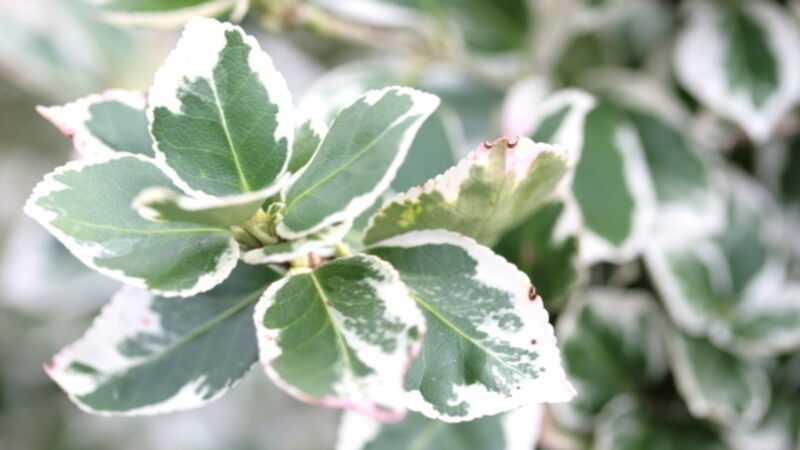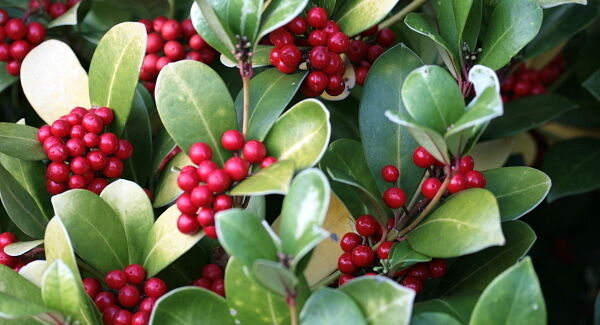We are an outdoor species so get outside to lift the darker moods of winter

THIS poem has been on my mind this week:
“I bade men tell me which in brief, which is fairer, flower or leaf.
They did not have the wit to say, leaves by night and flowers by day.
Leaves and bark, leaves and bark, to lean against and hear in the dark.
Petals I may have once pursued. Leaves are all my darker mood.”
I’ve been in that sort of mood.
Not broody, more contemplative and Robert Frost’s Leaves are all my Darker Mood, hits home with me.
As much as the opening lines of Simon and Garfunkels’s Sound of Silence – which does mention seeds and planted visions as well as darkness, to be fair.
Don’t worry I won’t be on Marian Finucane this morning confessing my first world problems and an inability to process them.
I will be walking the cobble stones but eating the sun.
But if either that poem or that song strikes a chord with you around this time of year, it is ok to acknowledge it. Better than to suppress it.
A large part of my love of gardening is how it medicates me.
I don’t just mean the herbs I harvest and the medicines and treatments I have learned to make from them.
I mean in the good it does me, generally — but also the specific power of it to deliver me from maladies of the soul or mind. It gets me out of myself but also in tune with my true self.
There are parts of Europe where your doctor may prescribe you a few visits to a community garden.
As long as it’s not weeding the doctor’s own allotment plot, then I am all for that. And more of it.
Daylight naturally resets our circadian rhythms and helps us sleep better and better regulate mood-implicated hormones — and that’s half the battle with most ailments.
We are an outdoor species, that’s how we evolved, to walk the earth, forage for food and not just to hunt Facebook likes.
Being outdoors for a spell each day is being true to the mechanisms of our body and brain — it’s as required as hygiene, food and sleep — but I would go further and say it is essential to our spirit or soul.
If, in a particular year, I have been more ensconced, writing away over summer and autumn months than out and about the garden in daylight — then at this time of the year I need to be more alert to my propensity towards SADness: to foggy mornings tinged with melancholy, to the ebbing away of light far too early in the day to feel you’ve had a day.
Ireland is at latitude that means if we didn’t mop up or top up enough sunlight or psychoactive sustenance (nutrients to create happy hormones), in the right season then some degree of Seasonal Affective Disorder is par for the course.
But, hey, other latitudes get it too. Some would argue that the whole concept of Christmas (née saturnalia) is a way to brighten up the collective mood in the depths of winter.
It works for most.
You don’t have to write the full letter to Santa in led lights on the roof of your house, but knock your socks off if that’s that your thing.
I find all I need are some sprigs of seasonal foliage about the kitchen to put me in the Christmas mood. I know for some people the Christmas ‘mood’ sometimes can be a bleak one – money worries, loneliness and bereavement can all take us off-script.
I have long learned tricks and techniques to avert total gloom; I eat more vitamin D to build my serotonin levels –— being vegetarian, that’s mushrooms and tofu in place of eggs and oily fish — and I practice mindfulness.
I don’t have the colouring book, I simply follow my breath and as much as possible I engage my senses within the sphere of the garden — listening to birdsong, tasting that tart first berry of the season, taking a handful of crumbly compost to fill a seed tray, smelling the roses and, more importantly, the lavender (which aromatherapeutic balances both the brain and body away from hyperactivity and sluggishness).
Gardening gives you resilience anyway, you learn a bad year for runner beans might make for a glut of tomatoes, and you have no choice but to be in the full acceptance of reality when slugs have fattened themselves over night on fresh seedlings.
You dust yourself off and you sow again.
There’s no app or guru guide required for that. It’s just what we do.
Gardening has strengthened my resilience and outlook to cope better with depression when I have had it and SAD when it sometimes creeps in— so little blips of situational downs don’t even rate anymore. Next!
So, to the shining lights — the spectacular foliage that brighten up the winter garden, but also as this column is supposed to be about productive gardening — those which weave brilliantly into some solstice cheeriness or Christmas wreaths and seasonal home decorations.
And we harvest these for some good cheer from the garden and not just to bring into the home, but into the interior self.
Now I am sure Ikea have some lovely Nordic pine cones and the local garden centre some nice ivy lengths, but a walk in nature this weekend, alone or with some friends will yield some too — you can bring along some cut out arrows in case comrades can’t cope with directional freedom.
You don’t have to bring the secateurs, it can just be a pleasant reccy to note good specimens to return to, closer to your need.
My favourite forageable foliage includes holly (there are over 600 Ilex species), berried or not and it’s the epitome of Christmas.
If you only have males (berryless) a red ribbon works a treat. Red was used in Ireland before Christianity to ward off negativity and invite good luck. Photinia × fraseri ‘Red Robin’ looks great in a wreath or table display and it’s red and a ‘red robin’— the herald of Christmas. I collect that other iconic plant, ivy, from its strangulating grip on local trees and use it to make door wreaths.
When I can’t get at some good pine sprigs I substitute with Leyland cypress out of my neighbour’s fortress hedge – it has to be good for something other than casting a deathstar shade over half my garden.
I do grow Scot’s pine (Pinus sylvestris) which brings good fragrance inside. (More on winter fragrant plants next week).
I adore the timely red tinges in Mahonia spp - named after Bernard McMahon (c. 1775-1816) the Irish-born American botanist who was the backbone of the Lewis and Clarke expedition across the states.
If we ever go back to the punt, he is my vote for the tenner — if John McCormack hasn’t it all sown up.
Hats off too to Euonymus ‘Emerald Gaiety’ the perfect foil in any wreath or table setting. Skimmia japonica and Myrtus communis add a bit of sophistication.

And while rosemary brings aromatic leaves and great colour, it is also one that helps the system recover from fatty foods, so save some sprigs for digestive tea over the holidays.
Whatever you harvest, do use some floral foam to help extend the life of the cuttings and so create a longer lasting displays and table centerpieces.
Door wreaths I would mist from time to time.
The big trick with arrangements is to cut your foliage as close as possible to the time you want to arrange them.
Within a few hours is good from the wild, from the garden within ten minutes is excellent.
If you have been hopping into neighbourhood hedges or hiking the hills in search of that ‘berried’ treasure, then remember to recut the bottom of the stems and put them straight into water containing an aspirin (helps to perk up the plant) or a cut flower nutrient, to condition before arranging.
The forage rule is do not cut more than you need and be it the garden or the hedgerow do think about how you are pruning it, rather than hacking some off.
You will want to be able to come back next year for more.
* Make a magnesium foliar spray to boost the vibrancy of foliage growing in your garden.
Simply dissolve 1-2 teaspoons of Epsom salts in 2-3 litres of warm water. Shake well and allow to cool before use.
* Stock up on foliage and berrying plants. Visit a garden centre to see what looks good now — it will look brilliant next year after a whole year growing in your garden.
* It’s not too late to plant, cloche or feed. Think of winter protection.













